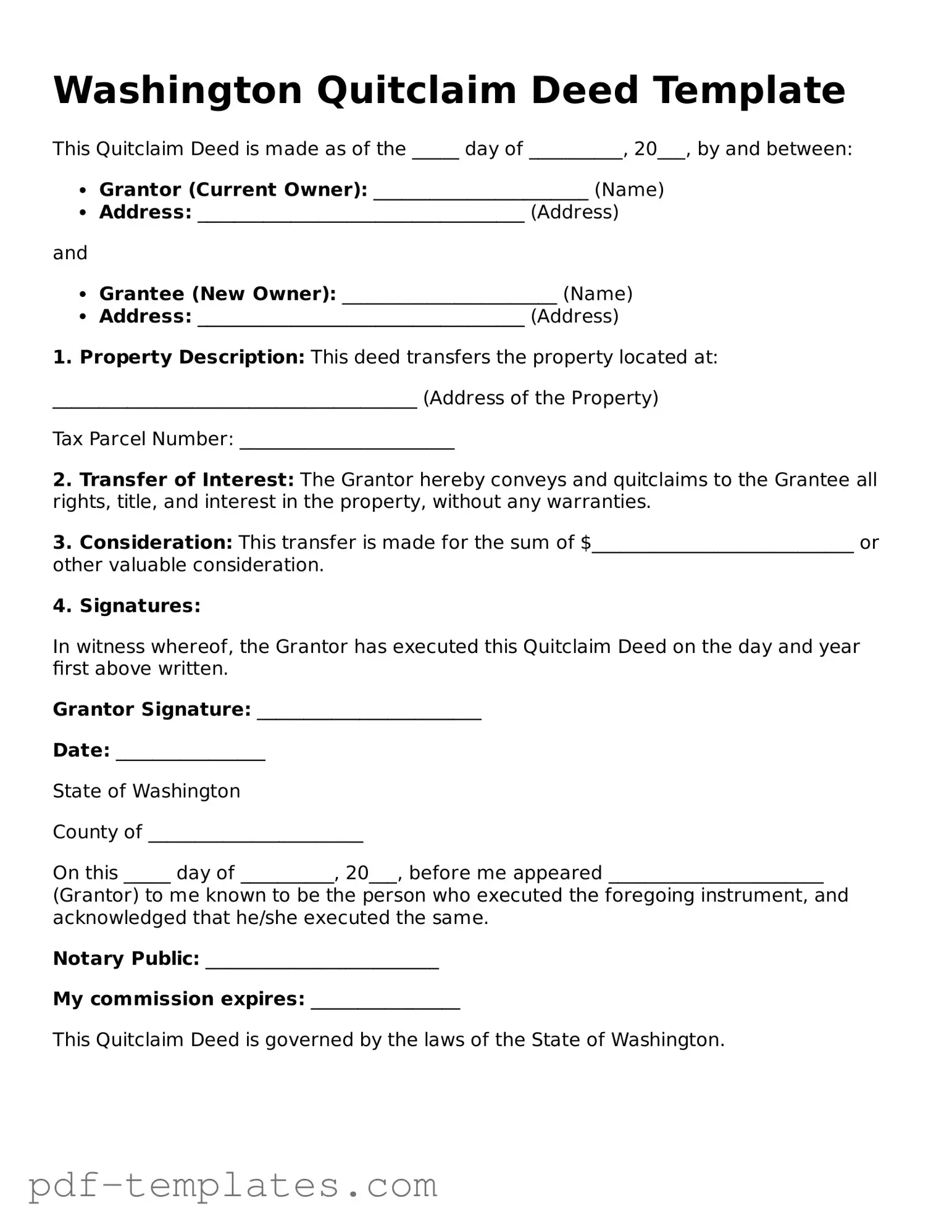Official Quitclaim Deed Template for Washington State
A Washington Quitclaim Deed is a legal document that allows a property owner to transfer their interest in real estate to another party without guaranteeing that the title is free from claims or encumbrances. This form is often used in situations where the parties know each other, such as transfers between family members or in divorce settlements. Understanding how to properly fill out this form is essential for ensuring a smooth transfer of property rights.
Ready to complete your Washington Quitclaim Deed? Click the button below to get started!
Customize Form Now
